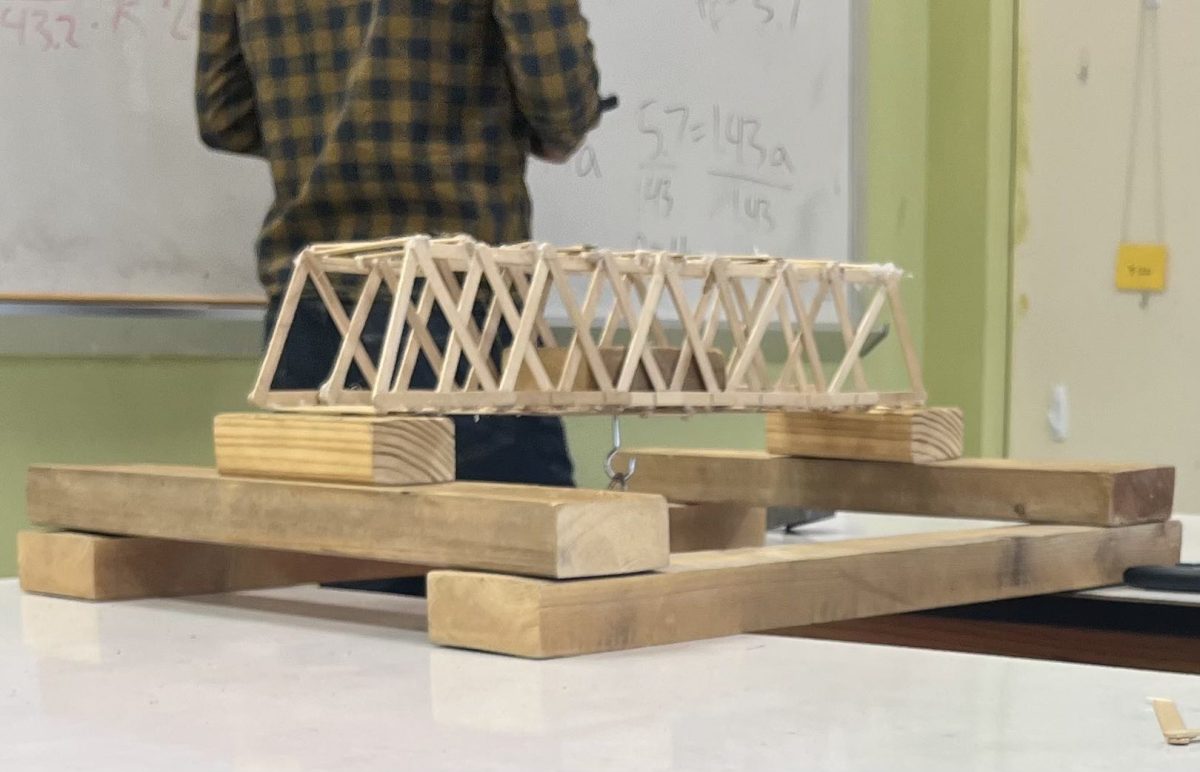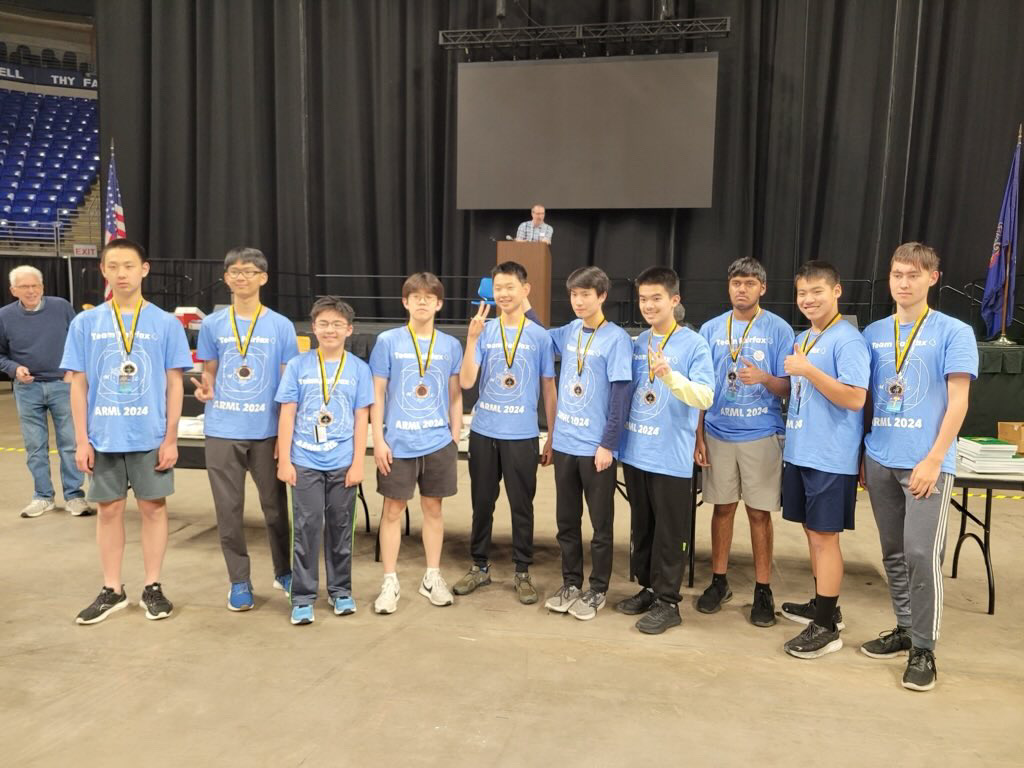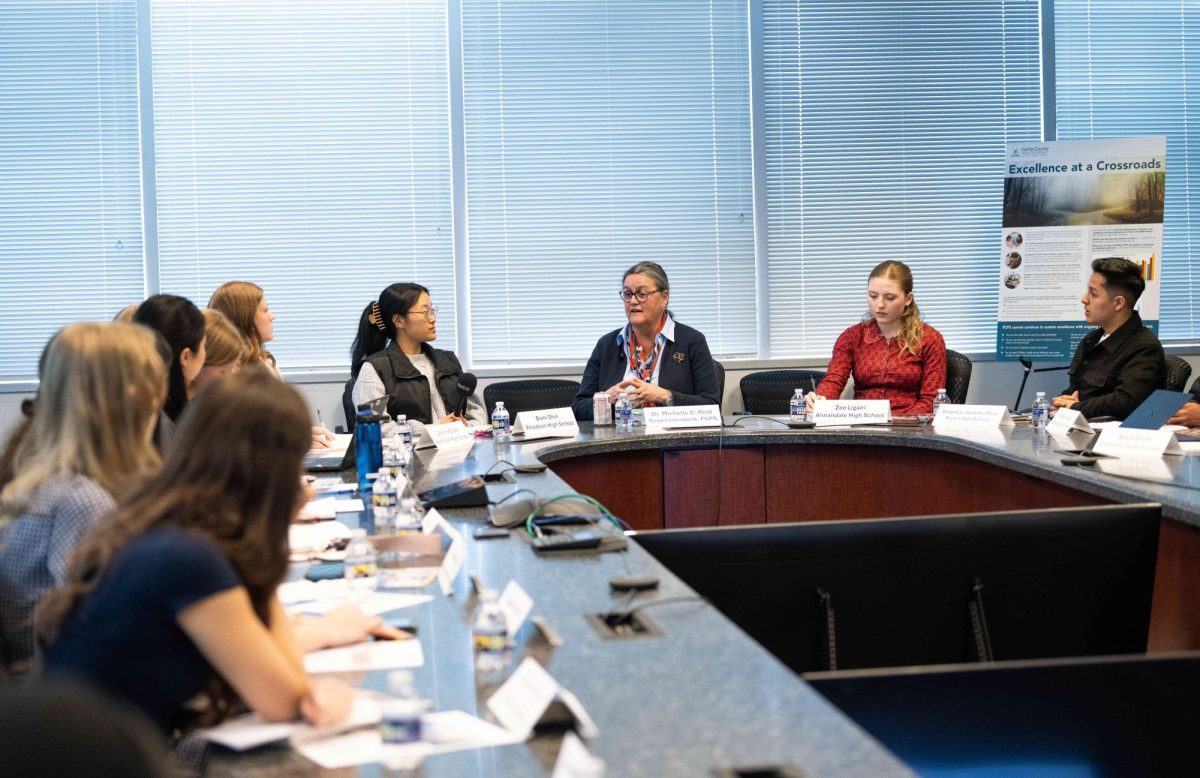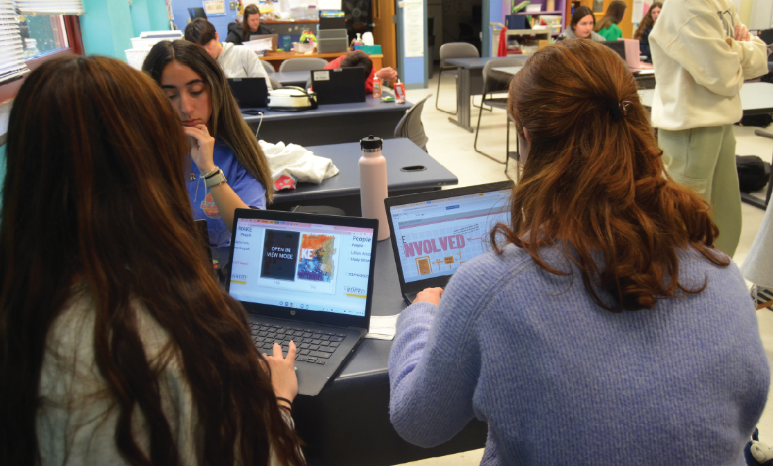McLean’s physics classes have recently traded in their textbooks for popsicle sticks as they delved into a hands-on bridge project that merged students’ theoretical knowledge with practical application.
This engaging classroom activity not only reinforced core physics principles, but also showcased the students’ creativity and problem-solving skills.
“Generally, science classes are required to have some experimental portion,” physics teacher Joseph Kin said. “I thought that the bridge project was a good way to implement some of the ideas that we were learning in the forces unit and our previous units.”
There were multiple components to this project as students were first required to submit research on the different variations of bridge structures.
“The research portion of the project was really helpful,” senior Minahil Ishaq said. “We were able to analyze bridges from around the world and understand the way they merged design with stability. One of my favorite bridges that we looked at was the Sea Cliff Bridge in Australia.”
As for the project, students were provided a variety of materials from hot glue guns to pieces of wood, but were permitted to use any other materials they could find from home. Despite a few restrictions on sizing, the project’s boundaries remained limitless.
“For our bridge, we just stuck with using the basics,” Ishaq said. “However, I did see some teams use plastic straws and similar materials for reinforcements which was really cool.”
The objective of the bridges was to be able to support a 15,000-gram load, while also remaining lightweight, embodying real-world applications of physics concepts.
Students were also required to submit a video outlining their process of construction, collaboration, and lessons learned throughout the activity.
“I hope that through building the bridges, students recognize that tried and true methods of building are tried and true for a reason and can be very effective, but that it doesn’t mean there’s only one way to success,” Kin said.
Overall, the project aimed to provide students with a tangible understanding of key physics principles such as tension, compression, and load distribution. It showcased the practical applications of the subject, illustrating that the laws of physics extend beyond the confines of the classroom.
“The whole class really liked this project,” Ishaq said. “It went beyond memorization or paper and pen, it actually showed us the relevance of physics in everyday life.”









